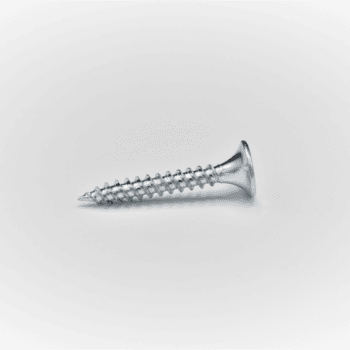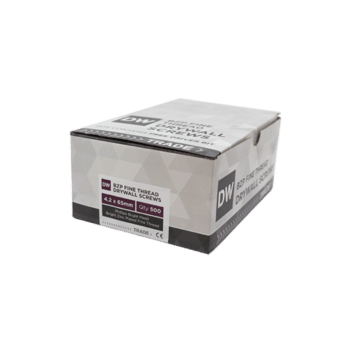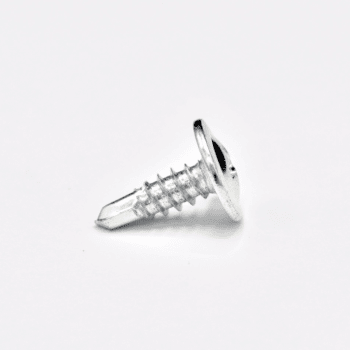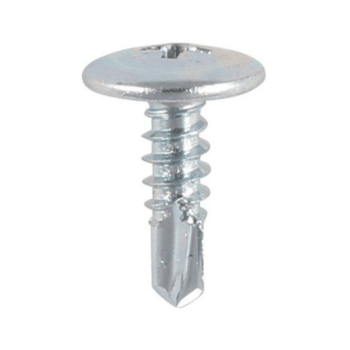Self-Tapping Screws vs Self-Drilling Screws
Even though self-tapping screws are commonly found and used in industrial, commercial, and construction fields, many individuals often confuse them with self-drilling screws. The confusion can be attributed to the fact that self-drilling screws are a subset of self-tapping screws. All self-drilling screws are self-tapping BUT all self-tappers are NOT self-drillers.
Let’s delve deeper into these two distinct products to clear up any confusion.
Self-Tapping Screws
Self-tapping screws go by many other names, including metal screws, tapper screws, sheet metal screws, and tapping screws.
These screws feature differently shaped tips, such as pointed, blunt, or flat, and can be categorised as thread-forming, thread-cutting, or thread-rolling. If a screw has a pointed end, it is thread-cutting and can create threads in a pre-drilled hole. In contrast, a flat-tip screw is thread-rolling, rolling or extruding threads, and causing no gap between the screw and the material.
When selecting the right self-tapping screw, the material it will be applied on should be taken into account. Various types of self-tapping screws are designed for specific materials like wood, metal, or plastic. Factors such as the size and length of the screw and the amount of torque needed should also be considered.
Self-tapping screws are generally easy to use with a range of tools, such as power drills and screwdrivers. Over-tightening, however, can lead to thread stripping and weaken the screw’s grip. It’s also crucial to ensure that the pilot hole, where the screw will be inserted, is of the right size and shape for proper thread formation and grip.
A significant benefit of self-tapping screws is that they don’t need pre-tapping. This is the procedure of forming threads before screw insertion, thus saving time and labour costs. They can also be used on materials too thin or brittle for pre-tapping, increasing their versatility in various applications. Proper hole size is critical, as an oversized hole can make the screw loose and unsecured. Alternatively, a hole too small can break the screw or cause the material to split.
Importance of pilot holes
The key difference between self-tapping and self-drilling screws is that self-tapping screws require a pre-drilled or pre-punched pilot hole to go through the metal. Pilot holes are crucial for self-tapping screws for several reasons. The installation becomes easier and reduces material damage, especially when the material is brittle. Moreover, a pilot hole reduces the stripping of the screw head and increases accuracy.
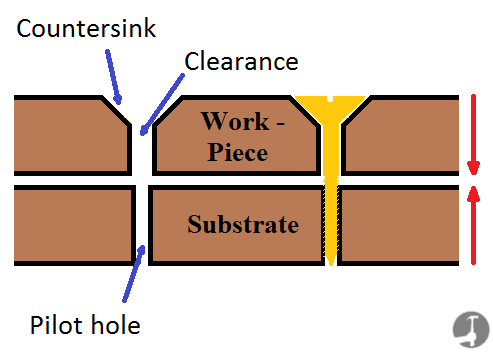
Self-tapping screws can be applied on metals, diverse plastics, and cast or forged materials like iron, brass, or aluminium. They’re suitable for surfaces where you cannot secure the rear end with a nut. They’re often used in tasks like fastening aluminium parts, fixing metal brackets to wood, or putting screws into plastic casings.
In summary, self-tapping screws are adaptable, convenient, and can create threads in various materials. They’re easy to use, save time and labour, and are suitable for many applications. The material, size, length, and thread pattern of the screw, along with correct installation techniques, can ensure a secure and reliable grip.
Self-Drilling Screws
Self-drilling screws can be recognised by their twisted drill-like point. They are often referred to as Tek Screws, named after the brand that made them famous.
Like self-tapping screws, self-drilling screws are easy to install with various tools and can lose grip strength if over-tightened. The pilot hole’s size and shape, where the screw is inserted, should be correct to ensure proper thread formation and grip.
The lengths of these screws can differ, but their drill points follow a standard, identified by numbers (1 to 5), determining their length and thickness. Common head and drive styles for self-drilling screws include Phillips, hex, or square.
Unlike self-tapping screws, self-drilling screws do not require a pilot hole. They can drill, tap, and fasten in a single operation, saving the extra step of drilling before fastening.
The selection of the right self-drilling screw also requires considering the material it will be used on. Various types of self-drilling screws are designed for specific materials like wood, metal, or plastic. The size, length of the screw, and the amount of torque needed should also be considered.
Different screw tips
Another consideration when using self-drilling screws is the screw tip. Various tip styles, such as fluted, split-point, or self-centring tips, are designed to guide the screw through the material without drifting. This could result in a poorly formed hole or damaged material.
These screws can fasten metal to metal, and wood to metal, and are effective with light, low-density materials. They have more specialised applications than self-tapping screws. They are suitable for metal building and light gauge metal assemblies. Point #5 is even capable of fastening half-inch steel sheets.
Self-drilling screws find use in HVAC applications, cladding, metal roofing, steel framing, and other general construction jobs.
To conclude, self-drilling screws offer a convenient method for creating threads and drilling holes in one step. They’re easy to install, save time and labour, and are suitable for many applications. The material, size, length, and tip of the screw, along with correct installation techniques, can ensure a secure and reliable grip.
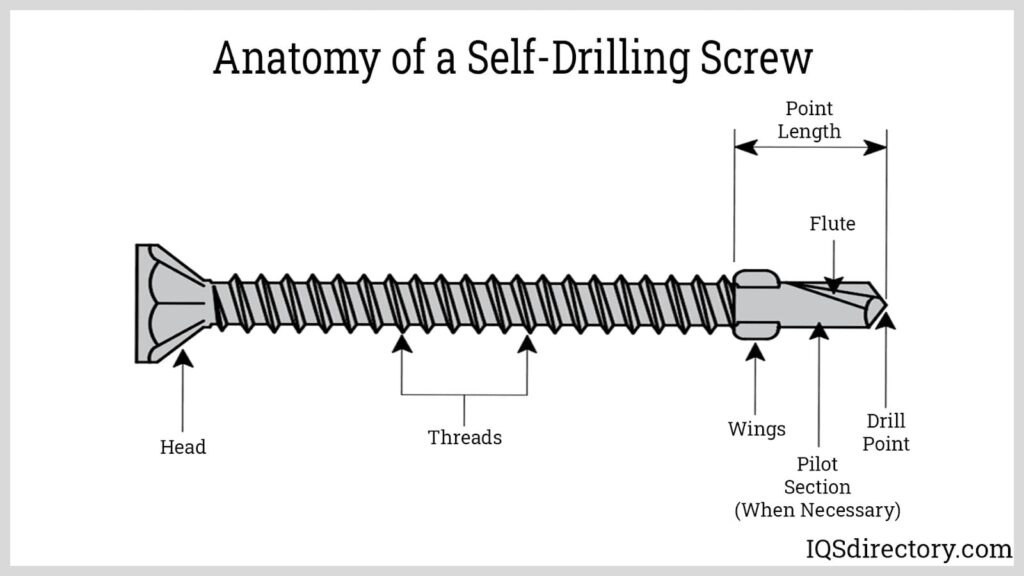
Similarities and differences
The major similarity between these two types of screws is their ability to form threads as they penetrate the material they’re applied to. Both are capable of attaching steel to steel and steel to wood when rivets or nuts and bolts aren’t viable.
Among these two, self-drilling screws have two distinct benefits. They save time and costs during assembly, and they reduce installation errors, which often occur if pre-drilled holes are of incorrect size.
-
BZP Fine Thread Drywall Screws
Rated 5.00 out of 5From £6.89 Incl. VATFrom £5.74 Excl. VAT -
BZP Wafer Head Self-Drilling Screws
From £11.41 Incl. VATFrom £9.51 Excl. VAT
If you have any questions about either screw, leave us a comment below!
Facebook
Twitter
LinkedIn
Your cart
Trade Account Login

We use cookies on our website to give you the most relevant experience by remembering your preferences and repeat visits. By clicking “Accept All”, you consent to the use of ALL the cookies. However, you may visit "Cookie Settings" to provide personalised consent.
Manage consent
Privacy Overview
This website uses cookies to improve your experience while you navigate through the website. Out of these, the cookies that are categorized as necessary are stored on your browser as they are essential for the working of basic functionalities of the website. We also use third-party cookies that help us analyze and understand how you use this website. These cookies will be stored in your browser only with your consent. You also have the option to opt-out of these cookies. But opting out of some of these cookies may affect your browsing experience.
Necessary cookies are absolutely essential for the website to function properly. These cookies ensure basic functionalities and security features of the website, anonymously.
| Cookie | Duration | Description |
|---|---|---|
| __stripe_mid | 1 year | This cookie is set by Stripe payment gateway. This cookie is used to enable payment on the website without storing any patment information on a server. |
| __stripe_sid | 30 minutes | This cookie is set by Stripe payment gateway. This cookie is used to enable payment on the website without storing any patment information on a server. |
| _GRECAPTCHA | 5 months 27 days | This cookie is set by the Google recaptcha service to identify bots to protect the website against malicious spam attacks. |
| apbct_cookies_test | session | CleanTalk sets this cookie to prevent spam on comments and forms and act as a complete anti-spam solution and firewall for the site. |
| apbct_page_hits | session | CleanTalk sets this cookie to prevent spam on comments and forms and act as a complete anti-spam solution and firewall for the site. |
| apbct_prev_referer | session | Functional cookie placed by CleanTalk Spam Protect to store referring IDs and prevent unauthorized spam from being sent from the website. |
| apbct_site_landing_ts | session | CleanTalk sets this cookie to prevent spam on comments and forms and act as a complete anti-spam solution and firewall for the site. |
| apbct_site_referer | 3 days | This cookie is placed by CleanTalk Spam Protect to prevent spam and to store the referrer page address which led the user to the website. |
| apbct_timestamp | session | CleanTalk sets this cookie to prevent spam on comments and forms and act as a complete anti-spam solution and firewall for the site. |
| apbct_urls | 3 days | This cookie is placed by CleanTalk Spam Protect to prevent spam and to store the addresses (urls) visited on the website. |
| AWSALBCORS | 7 days | This cookie is managed by Amazon Web Services and is used for load balancing. |
| cookielawinfo-checkbox-advertisement | 1 year | Set by the GDPR Cookie Consent plugin, this cookie is used to record the user consent for the cookies in the "Advertisement" category . |
| cookielawinfo-checkbox-analytics | 11 months | This cookie is set by GDPR Cookie Consent plugin. The cookie is used to store the user consent for the cookies in the category "Analytics". |
| cookielawinfo-checkbox-functional | 11 months | The cookie is set by GDPR cookie consent to record the user consent for the cookies in the category "Functional". |
| cookielawinfo-checkbox-necessary | 11 months | This cookie is set by GDPR Cookie Consent plugin. The cookies is used to store the user consent for the cookies in the category "Necessary". |
| cookielawinfo-checkbox-others | 11 months | This cookie is set by GDPR Cookie Consent plugin. The cookie is used to store the user consent for the cookies in the category "Other. |
| cookielawinfo-checkbox-performance | 11 months | This cookie is set by GDPR Cookie Consent plugin. The cookie is used to store the user consent for the cookies in the category "Performance". |
| ct_checkjs | session | CleanTalk–Used to prevent spam on our comments and forms and acts as a complete anti-spam solution and firewall for this site. |
| ct_fkp_timestamp | session | CleanTalk sets this cookie to prevent spam on the site's comments/forms, and to act as a complete anti-spam solution and firewall for the site. |
| ct_pointer_data | session | CleanTalk sets this cookie to prevent spam on the site's comments/forms, and to act as a complete anti-spam solution and firewall for the site. |
| ct_ps_timestamp | session | CleanTalk sets this cookie to prevent spam on the site's comments/forms, and to act as a complete anti-spam solution and firewall for the site. |
| ct_sfw_pass_key | 1 month | CleanTalk sets this cookie to prevent spam on comments and forms and act as a complete anti-spam solution and firewall for the site. |
| ct_timezone | session | CleanTalk–Used to prevent spam on our comments and forms and acts as a complete anti-spam solution and firewall for this site. |
| elementor | never | This cookie is used by the website's WordPress theme. It allows the website owner to implement or change the website's content in real-time. |
| viewed_cookie_policy | 11 months | The cookie is set by the GDPR Cookie Consent plugin and is used to store whether or not user has consented to the use of cookies. It does not store any personal data. |
Functional cookies help to perform certain functionalities like sharing the content of the website on social media platforms, collect feedbacks, and other third-party features.
| Cookie | Duration | Description |
|---|---|---|
| __zlcmid | 1 year | This cookie is used by Zendesk live chat and is used to store the live chat ID. |
| bcookie | 2 years | LinkedIn sets this cookie from LinkedIn share buttons and ad tags to recognize browser ID. |
| bscookie | 2 years | LinkedIn sets this cookie to store performed actions on the website. |
| lang | session | LinkedIn sets this cookie to remember a user's language setting. |
| lidc | 1 day | LinkedIn sets the lidc cookie to facilitate data center selection. |
| UserMatchHistory | 1 month | LinkedIn sets this cookie for LinkedIn Ads ID syncing. |
Performance cookies are used to understand and analyze the key performance indexes of the website which helps in delivering a better user experience for the visitors.
| Cookie | Duration | Description |
|---|---|---|
| __utma | 2 years | This cookie is set by Google Analytics and is used to distinguish users and sessions. The cookie is created when the JavaScript library executes and there are no existing __utma cookies. The cookie is updated every time data is sent to Google Analytics. |
| __utmb | 30 minutes | Google Analytics sets this cookie, to determine new sessions/visits. __utmb cookie is created when the JavaScript library executes and there are no existing __utma cookies. It is updated every time data is sent to Google Analytics. |
| __utmc | session | The cookie is set by Google Analytics and is deleted when the user closes the browser. It is used to enable interoperability with urchin.js, which is an older version of Google Analytics and is used in conjunction with the __utmb cookie to determine new sessions/visits. |
| __utmt | 10 minutes | Google Analytics sets this cookie to inhibit request rate. |
| __utmv | 2 years | The __utmv cookie is set on the user's device, to enable Google Analytics to classify the visitor. |
| __utmz | 6 months | Google Analytics sets this cookie to store the traffic source or campaign by which the visitor reached the site. |
| sib_cuid | 6 months | Purechat uses this cookie to send data to purechat.com, to connect visitors to the reservation team and track visitors to stay on portal. |
| SRM_B | 1 year 24 days | Used by Microsoft Advertising as a unique ID for visitors. |
Analytical cookies are used to understand how visitors interact with the website. These cookies help provide information on metrics the number of visitors, bounce rate, traffic source, etc.
| Cookie | Duration | Description |
|---|---|---|
| _ga | 2 years | The _ga cookie, installed by Google Analytics, calculates visitor, session and campaign data and also keeps track of site usage for the site's analytics report. The cookie stores information anonymously and assigns a randomly generated number to recognize unique visitors. |
| _gat_gtag_UA_61069204_2 | 1 minute | Set by Google to distinguish users. |
| _gat_UA-61069204-2 | 1 minute | A variation of the _gat cookie set by Google Analytics and Google Tag Manager to allow website owners to track visitor behaviour and measure site performance. The pattern element in the name contains the unique identity number of the account or website it relates to. |
| _gcl_au | 3 months | Provided by Google Tag Manager to experiment advertisement efficiency of websites using their services. |
| _gid | 1 day | Installed by Google Analytics, _gid cookie stores information on how visitors use a website, while also creating an analytics report of the website's performance. Some of the data that are collected include the number of visitors, their source, and the pages they visit anonymously. |
| _uetsid | 1 day | This cookies are used to collect analytical information about how visitors use the website. This information is used to compile report and improve site. |
| CONSENT | 2 years | YouTube sets this cookie via embedded youtube-videos and registers anonymous statistical data. |
Advertisement cookies are used to provide visitors with relevant ads and marketing campaigns. These cookies track visitors across websites and collect information to provide customized ads.
| Cookie | Duration | Description |
|---|---|---|
| _fbp | 3 months | This cookie is set by Facebook to display advertisements when either on Facebook or on a digital platform powered by Facebook advertising, after visiting the website. |
| ANONCHK | 10 minutes | The ANONCHK cookie, set by Bing, is used to store a user's session ID and also verify the clicks from ads on the Bing search engine. The cookie helps in reporting and personalization as well. |
| fr | 3 months | Facebook sets this cookie to show relevant advertisements to users by tracking user behaviour across the web, on sites that have Facebook pixel or Facebook social plugin. |
| MUID | 1 year 24 days | Bing sets this cookie to recognize unique web browsers visiting Microsoft sites. This cookie is used for advertising, site analytics, and other operations. |
| NID | 6 months | NID cookie, set by Google, is used for advertising purposes; to limit the number of times the user sees an ad, to mute unwanted ads, and to measure the effectiveness of ads. |
| test_cookie | 15 minutes | The test_cookie is set by doubleclick.net and is used to determine if the user's browser supports cookies. |
| uuid | 6 months | MediaMath sets this cookie to avoid the same ads from being shown repeatedly and for relevant advertising. |
| VISITOR_INFO1_LIVE | 5 months 27 days | A cookie set by YouTube to measure bandwidth that determines whether the user gets the new or old player interface. |
| YSC | session | YSC cookie is set by Youtube and is used to track the views of embedded videos on Youtube pages. |
| yt-remote-connected-devices | never | YouTube sets this cookie to store the video preferences of the user using embedded YouTube video. |
| yt-remote-device-id | never | YouTube sets this cookie to store the video preferences of the user using embedded YouTube video. |
| yt.innertube::nextId | never | This cookie, set by YouTube, registers a unique ID to store data on what videos from YouTube the user has seen. |
| yt.innertube::requests | never | This cookie, set by YouTube, registers a unique ID to store data on what videos from YouTube the user has seen. |
Other uncategorized cookies are those that are being analyzed and have not been classified into a category as yet.
| Cookie | Duration | Description |
|---|---|---|
| _clck | 1 year | No description |
| _clsk | 1 day | No description |
| _uetvid | 1 year 24 days | No description available. |
| AnalyticsSyncHistory | 1 month | No description |
| apbct_pixel_url | session | No description |
| apbct_visible_fields_0 | session | No description |
| apbct_visible_fields_1 | session | No description |
| apbct_visible_fields_10 | session | No description |
| apbct_visible_fields_2 | session | No description |
| apbct_visible_fields_3 | session | No description |
| apbct_visible_fields_4 | session | No description |
| apbct_visible_fields_5 | session | No description |
| apbct_visible_fields_6 | session | No description |
| apbct_visible_fields_7 | session | No description |
| apbct_visible_fields_8 | session | No description |
| apbct_visible_fields_9 | session | No description |
| ct_checked_emails | session | No description |
| ct_has_scrolled | session | No description |
| ct_mouse_moved | session | No description |
| ct_screen_info | session | No description |
| ictf_master | never | No description available. |
| li_gc | 2 years | No description |
| m | 2 years | No description available. |
| SM | session | No description available. |
| testinfinitycookie | session | No description |
| woocommerce_show_tax | 7 days | No description available. |
| wp_woocommerce_session_c5ac76b408021294cb56bcc27eddf8a1 | 2 days | No description |


